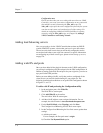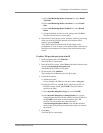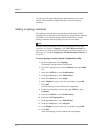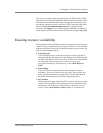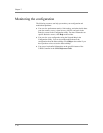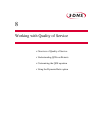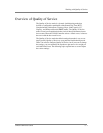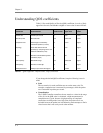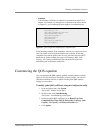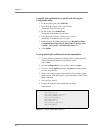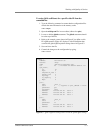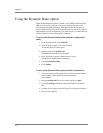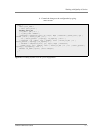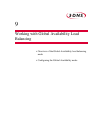
Chapter 8
8 - 2
Understanding QOS coefficients
Table 8.1 lists each Quality of Service (QOS) coefficient, its scale, a likely
upper limit for each, and whether a higher or lower value is more efficient.
If you change the default QOS coefficients, keep the following issues in
mind.
◆ Scale
The raw metrics for each coefficient are not on the same scale. For
example, completion rate is measured in percentages, while the packet
rate is measured in packets per second.
◆ Normalization
The 3-DNS Controller normalizes the raw metrics to values in the range
of 0 to10. As the QOS value is calculated, a high measurement for
completion rate is good, because a high percentage of completed
connections are being made, but a high value for packet rate is not
desirable because the packet rate load balancing mode attempts to find a
virtual server that is not overly taxed at the moment.
Coefficient How measured Default value
Example
upper limit
Higher or
lower?
Packet rate Packets per second 1 700 Lower
Round trip time Microseconds 50 2,000,000 Lower
Completion rate Percentage of successfully
transferred packets (0-100%)
5 100% Higher
Topology Score that defines network
proximity by comparing server and
LDNS IP addresses (0-2
32
)
0 100 Higher
Hops Number of intermediate systems
transitions (hops)
0 64 Lower
Link Capacity Bandwidth usage 30 2,000,000 Higher
VS capacity Number of nodes up 0 20 Higher
Kilobytes/second Kilobytes per second throughput 3 15000 Lower
Table 8.1 QOS coefficients: Default values, ranges, and limits



